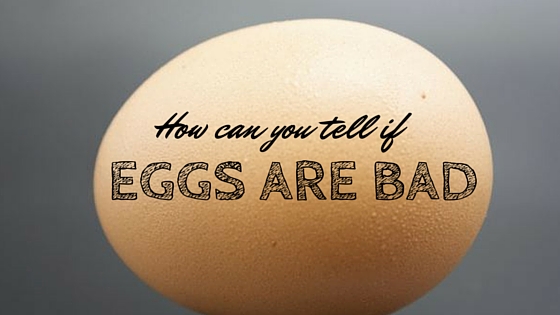We all know that expiration dates on foods can be deceiving. “Sell by” dates don’t really tell you whether or not your food has gone bad and “use by” dates can be misleading at best. But while it’s pretty easy to gauge whether a cut of meat or your gallon of milk is still safe to consume, it can be harder with foods like eggs, which don’t necessarily give off a strong odor. So how can you tell if eggs are bad?
How Can You Tell If Eggs Are Bad?
To tell if an egg is still fresh enough to eat, there are two ways you can go about it: you can check it once it’s cracked, or you can test the egg pre-cracking. Obviously, the most ideal solution is to test the egg before cracking it. Otherwise, you can’t do delicious things like hard boiling it or whipping up some deviled eggs.
The Floating Method
If you’ve been around the kitchen long enough, you’ve probably heard of this tip. You take a bowl of water (or a tall glass that an egg will easily fit in) and fill it with water. Carefully take the egg and drop it into the water. If it sinks to the bottom of the bowl or glass and stays there, you’ve got yourself a pretty fresh egg. If it sinks to the bottom, but one tip of the egg stands up, it’s slightly older, but still fine to eat. Something good to know about these eggs is that slightly older eggs will make for better hard boiled eggs, as the shells will be easier to peel. If, however, the egg floats when you put it in the water, it’s older. This happens because over time eggs lose moisture through their shells. This results in the shrinking of the yolk and contents inside the egg and expanding the air pockets, making the egg float.
If you’re still not sure, take the egg out of the water and dry it off. Lift it up to your ear and shake it. If there’s no noise, you’re safe. If you can hear something rattle inside of the egg, it’s likely older.
Now, just because an egg is older doesn’t necessarily mean that it’s unsafe to eat. However, it’s about as good a measure as you can get without cracking open your egg to do a sniff test. And if you’re already there, here’s how to check for freshness with a cracked egg.
The Cracking Test
If you’re scrambling or frying your egg, you can skip the water test and move on to the cracking test as you’re going to need to open that thing up anyway in order to cook it. Start by cracking the egg onto a plate. Take a look at the yolk – yolks that are fresh should be round and tight. Older eggs will have yolks that are runny or look a little flat.
Also, take note of the color. Fresh yolks will be bright yellow, while older egg yolks will lose their brightness, becoming paler in color. Finally, get close and take a whiff of your egg. While eggs generally don’t have much of an odor, an egg that’s no longer good will give off a foul smell, letting you know that it’s no longer ok to eat.
Do you have any tell-tale signs for figuring out if your eggs have gone bad? Share them with us below in the comments!





